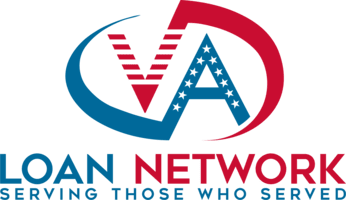In this Article
What is a VA Loan Origination Fee?
A VA loan origination fee is a charge imposed by lenders to cover the administrative costs of processing a VA loan. This fee is capped at 1% of the total loan amount, meaning lenders cannot charge more than that percentage for origination-related services.
Understanding VA Loan Origination Fees
An origination fee is charged by the lender to process, underwrite, and finalize the loan. With VA loans, the Department of Veterans Affairs places a 1% cap on what the lender can charge as an “origination fee.”
Key Points to Remember:
- The origination fee is not the same as the VA funding fee. The funding fee is paid to the VA to help offset the program’s costs, while the origination fee covers the lender’s administrative expenses.
- The 1% cap is based on the total loan amount (excluding down payment).
- Some lenders may charge less than 1%. Others might offer “no-fee” loans but compensate with a slightly higher interest rate.
Why Does This Fee Exist?
The origination fee compensates the lender for various administrative tasks, including:
- Processing loan applications
- Verifying financial details (credit score, income, and debt-to-income ratio)
- Underwriting and approving the loan
- Coordinating the loan closing process
The Department of Veterans Affairs (VA) enforces this 1% cap to ensure affordability and protect borrowers from excessive lender fees.
How the 1% Fee Rule Works
The 1% rule is a protective measure for VA borrowers. Lenders cannot charge more than 1% of the total loan amount as their “origination fee.”
Example:
- Loan Amount: $300,000
- 1% Fee: $3,000
That $3,000 covers the lender’s overhead for origination tasks. If the lender tries to charge additional “junk fees” (such as underwriting fees, processing fees, or document prep fees), those fees must be absorbed into the 1% or be waived.
| Loan Amount | Max 1% Origination Fee |
|---|---|
| $200,000 | $2,000 |
| $300,000 | $3,000 |
| $400,000 | $4,000 |
| $500,000 | $5,000 |
Lenders cannot charge more than 1% for origination-related fees but may charge separate fees for third-party services, such as credit reports, title insurance, and appraisal fees.
Other VA Loan Closing Costs
Aside from origination fees, VA loan borrowers should budget for additional closing costs. Here’s a breakdown:
| Cost Type | Description | Estimated Range |
|---|---|---|
| VA Funding Fee | A one-time fee paid to the VA; can often be financed into the loan. Fee varies by usage & down payment. | 0.5% – 3.6% of the loan amount |
| Appraisal Fee | VA-certified appraisal to ensure property meets VA guidelines and to determine fair market value. | $525 – $800 (varies by location and property type) |
| Title Insurance | Insurance policy protecting against legal claims on property ownership. | $300 – $1,000+ (depends on home price and state) |
| Recording Fees | Fees charged by local government to record the deed and mortgage details. | $50 – $200+ (varies by county) |
| Credit Report Fee | Covers the cost of pulling your credit history. | $30 – $50 |
| Prepaid Taxes & Insurance | Advance payments on property taxes, homeowners insurance, sometimes mortgage interest. | Varies by region, insurance provider, and loan closing date |
How VA Loan Origination Fees Compare to Other Loan Types
To see why VA loan origination fees can still be beneficial for veterans, it’s helpful to compare them against conventional loans.
VA Loans vs. Conventional Loans
| Factor | VA Loan | Conventional Loan |
|---|---|---|
| Down Payment | Often 0% | Typically 3% – 20% |
| Origination Fee Cap | Capped at 1% of loan amount | Can vary; no specific cap |
| Mortgage Insurance (PMI) | Not required | Required if < 20% down |
| Interest Rates | Often lower (government backing) | Based on credit score, market conditions |
| Funding Fee | 0.5% – 3.6% (can be financed) | None |
| Closing Costs | Generally lower than or comparable to conventional | Varies widely by lender |
| Credit Score Requirements | Typically more flexible | Usually higher and stricter |
While VA loans have an origination fee, they save borrowers money by eliminating PMI and down payments.
Strategies to Reduce or Manage VA Origination Fees
Even though VA origination fees are capped, you might still want to minimize your costs. Here are some effective ways:
Shop Multiple Lenders
- The simplest way to lower your closing costs is to compare Loan Estimates from at least 3-5 lenders.
- Each lender may structure fees differently. Some might charge the full 1%, while others charge 0.75% or waive other closing costs.
Negotiate Seller Concessions
- VA rules allow sellers to contribute up to 4% of the loan amount toward closing costs.
- In a buyer-friendly market, it’s common to request the seller pay all or part of the origination fee.
Consider No-Fee or Low-Fee Loans
- Some lenders offer “no-fee” or “low-fee” loans but may slightly increase the interest rate to make up for lost revenue.
- Evaluate your break-even point: if you plan to stay in the home long-term, a lower interest rate with some upfront fees might be better.
Check for Possible Exemptions
- If you have a service-connected disability or meet certain VA criteria, you could be exempt from the funding fee, which might free up funds to tackle other closing costs.
- Being exempt from the funding fee does not always exempt you from the origination fee, but it can reduce your overall costs significantly.
Look for Lender Credits
- Sometimes lenders offer credits to cover part of your closing costs (including the origination fee), in exchange for a slightly higher interest rate.
- If you plan to move or refinance within a few years, this approach can keep upfront costs lower.
Improve Your Credit Score
- Borrowers with strong credit often have better negotiating power.
- A credit score in the high 700s can lead to more favorable loan terms, potentially reducing lender fees or interest rates.
Request a Closing Cost Breakdown
- Always ask for a detailed list of fees. If you see generic charges like “admin fee” or “processing fee,” ask if they can be waived or combined into the 1% origination.
- The more information you have, the better positioned you are to negotiate.
Frequently Asked Questions
1. Can my VA loan origination fee exceed 1% if I agree to pay extra?
No. The VA sets a strict 1% cap on the origination fee. If a lender tries to charge additional fees, they must be covered under that 1% or waived.
2. Is the VA funding fee the same as the VA loan origination fee?
No. The funding fee is paid to the Department of Veterans Affairs to sustain the loan program. The origination fee is what the lender charges for its services.
3. Can I roll the VA loan origination fee into the loan amount?
You cannot typically finance the origination fee directly into the loan (unlike the funding fee). However, some lenders may offer lender-paid options that indirectly roll costs into a higher interest rate.
4. How can I confirm a lender is not charging extra hidden fees?
Request the Loan Estimate (LE) and closely review Section A (Loan Costs) and Section B (Services You Cannot Shop For). Compare multiple LEs from different lenders to spot discrepancies.
5. Are there any fees a VA borrower can’t pay?
Yes. The VA prohibits borrowers from paying attorney fees for services provided to the lender, certain “junk fees,” and prepayment penalties. Refer to VA guidelines or consult with your lender to confirm specific non-allowable fees.
6. Do I still pay an origination fee if I put a down payment on a VA loan?
Yes. Whether you put 0% or 20% down, the lender can still charge up to 1% of the total loan amount as the origination fee.
7. If I refinance my VA loan, do I pay another origination fee?
If you do a VA Interest Rate Reduction Refinance Loan (IRRRL) or a Cash-Out Refinance, the lender can charge an origination fee, subject to VA caps. Always review the Loan Estimate to verify costs.
8. Is it ever worth paying discount points on a VA loan?
Discount points lower your interest rate in exchange for an upfront fee. If you plan to stay in the home long enough to recoup the cost via lower monthly payments, buying points could be beneficial. Otherwise, you may prefer saving that cash at closing.
The Bottom Line
VA loans offer unparalleled advantages for eligible borrowers, including no down payment, no PMI, and manageable closing costs with a strict 1% cap on origination fees.
Although this fee can feel like an added expense, it ultimately protects veterans and active-duty service members by limiting excessive lender charges.
By shopping around, negotiating, and leveraging seller concessions, you can minimize your out-of-pocket costs. Whether you’re a first-time homebuyer or a seasoned homeowner, understanding how VA loan origination fees work—and how to manage them—will empower you to get the most value from your VA loan benefits.
Levi Rodgers is a nationally recognized real estate expert and U.S. Army Green Beret (Ret.) who writes about homeownership, VA loans, and Veteran-focused real estate strategies. After his military service, Levi built one of the top-performing real estate teams in the country, helping thousands of military families navigate the path to homeownership. His writing draws from firsthand experience, leadership, and a deep commitment to serving those who serve. Levi simplifies complex housing topics and offers real-world guidance on credit, financing, and smart real estate moves — especially for Veterans and first-time buyers.


